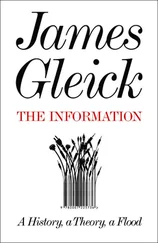James Gleick - Time Travel
Здесь есть возможность читать онлайн «James Gleick - Time Travel» — ознакомительный отрывок электронной книги совершенно бесплатно, а после прочтения отрывка купить полную версию. В некоторых случаях можно слушать аудио, скачать через торрент в формате fb2 и присутствует краткое содержание. Год выпуска: 2016, Издательство: Knopf Doubleday Publishing Group, Жанр: Старинная литература, на английском языке. Описание произведения, (предисловие) а так же отзывы посетителей доступны на портале библиотеки ЛибКат.
- Название:Time Travel
- Автор:
- Издательство:Knopf Doubleday Publishing Group
- Жанр:
- Год:2016
- ISBN:нет данных
- Рейтинг книги:5 / 5. Голосов: 1
-
Избранное:Добавить в избранное
- Отзывы:
-
Ваша оценка:
- 100
- 1
- 2
- 3
- 4
- 5
Time Travel: краткое содержание, описание и аннотация
Предлагаем к чтению аннотацию, описание, краткое содержание или предисловие (зависит от того, что написал сам автор книги «Time Travel»). Если вы не нашли необходимую информацию о книге — напишите в комментариях, мы постараемся отыскать её.
Time Travel — читать онлайн ознакомительный отрывок
Ниже представлен текст книги, разбитый по страницам. Система сохранения места последней прочитанной страницы, позволяет с удобством читать онлайн бесплатно книгу «Time Travel», без необходимости каждый раз заново искать на чём Вы остановились. Поставьте закладку, и сможете в любой момент перейти на страницу, на которой закончили чтение.
Интервал:
Закладка:
• The laws of science do not distinguish between the past and the future.
• Therefore —do we have a syllogism?—
• Time is not real.
The observer—physicist or philosopher—stands outside and looks in. The human experience of time is suspended for abstract observation. Past, present, and future are bounded in a nutshell.
And what of our persistent impressions to the contrary? We experience time in our bones. We remember the past, we await the future. But the physicist notes that we are fallible organisms, easily fooled and not to be trusted. Our prescientific ancestors experienced the flat earth and traveling sun. Could our experience of time be equally naïve? Perhaps—but scientists have to come back to the evidence of our senses in the end. They must test their models against experience.
“People like us, who believe in physics,” Einstein said, “know that the distinction between past, present, and future is only a stubbornly persistent illusion.” Who believe in physics —I detect something wistful in that. “In physics,” repeats Freeman Dyson, “the division of space-time into past, present, and future is an illusion.” These formulations retain a bit of humility that is sometimes lost in the quoting. Einstein was consoling a bereaved sister and son, and perhaps thinking as well of his own pending mortality. Dyson was expressing hopeful bonds of kinship with people of the past and people of the future: “They are our neighbors in the universe.” These are beautiful thoughts, but they were not intended as final statements about the nature of reality. As Einstein himself said on an earlier occasion, “Time and space are modes by which we think, and not conditions in which we live.”
There is something perverse about a scientist’s believing that the future is already complete—locked down tight, no different from the past. The first motivation for the scientific enterprise, the prime directive, is to gain some control over our headlong tumble into an unknown future. For ancient astronomers to forecast the movements of heavenly bodies was vindication and triumph; to predict an eclipse was to rob it of its terror; medical science has labored for centuries to eradicate diseases and extend the lifetimes that fatalists call fixed; in the first powerful application of Newton’s laws to earthly mechanics, students of gunnery computed the parabolic trajectories of cannonballs, the better to send them to their targets; twentieth-century physicists not only managed to change the course of warfare but then dreamt of using their new computing machines to forecast and even control the earth’s weather. Because, why not? We are pattern-recognition machines, and the project of science is to formalize our intuitions, do the math, in hopes not just of understanding—a passive, academic pleasure—but of bending nature, to the limited extent possible, to our will.
Remember Laplace’s perfect intelligence, vast enough to comprehend all the forces and the positions and to submit them to analysis. “To it nothing would be uncertain, and the future as the past would be present to its eyes.” This is how the future becomes indistinguishable from the past. Tom Stoppard joins the parade of philosophers wittily paraphrasing him: “If you could stop every atom in its position and direction, and if your mind could comprehend all the actions thus suspended, then if you were really, really good at algebra you could write the formula for all the future; and although nobody can be so clever as to do it, the formula must exist just as if one could.” It bears asking—because so many modern physicists still believe something like this—why? If no intelligence can be so comprehensive, no computer can do so much computing, why must we treat the future as though it were predictable?
The implicit answer, sometimes explicit, is that the universe is its own computer. It computes its own destiny, step by step, bit by bit (or qubit by qubit). The computers we know, in the early twenty-first century, not counting the tantalizing quantum variety, operate deterministically. A given input always leads to the same output. Our input, again, is the totality of initial conditions and our program is the laws of nature. These are the whole kit and caboodle: the entire future is already there. No information needs to be added, nothing remains to be discovered. There shall be no novelty, no surprise. Only the clanking of the logical gears remains—a mere formality.
Yet we have learned that in the real world things are always a little messy. Measurements are approximate. Knowledge is imperfect. “The parts have a certain loose play upon one another,” said William James, “so that the laying down of one of them does not necessarily determine what the others shall be.” James might have been pleasantly surprised by the revelations of quantum physics: the exact states of particles can never be perfectly known; uncertainty reigns; probability distributions replace the perfect clockwork dreamt of by Laplace. “It admits that possibilities may be in excess of actualities,” James might have said—that is, he did say it, but in advance of the actual science—“and that things not yet revealed to our knowledge may really in themselves be ambiguous.” Just so. A physicist with a Geiger counter can never guess when the next click will come. You might think that our modern quantum theorists would join James in cheering indeterminism.
The computers in our thought experiments, if not always the computers we own, are deterministic because people have designed them that way. Likewise, the laws of science are deterministic because people have written them that way. They have an ideal perfection that can be attained in the mind or in the Platonic realm but not in the real world. The Schrödinger equation, the screwdriver of modern physics, manages the uncertainties by bundling up the probabilities into a unit, a wave function. It’s a ghostly abstract object, this wave function. A physicist can write it as ψ and not worry too much about the contents. “Where did we get that from?” said Richard Feynman. “Nowhere. It’s not possible to derive it from anything you know. It came out of the mind of Schrödinger.” It just was, and is, astoundingly effective. And once you have it, the Schrödinger equation returns determinism to the process. Calculations are deterministic. Given proper input, good quantum physicists can compute the output with certainty and keep on computing. The only trouble comes in the act of returning from the idealized equations to the real world they are meant to describe. Finally we have to parachute in from the Platonic abstract mathematics to the sublunary stuff on laboratory benches. At that point, when an act of measurement is required, the wave function “collapses,” as physicists say. Schrödinger’s cat is either alive or dead. According to a limerick:
It comes as a total surprise
That what we learn from the ψ’s
Not the fate of the cat
But related to that:
The best we can ever surmise.
This collapse of the wave function is the trigger for a special kind of argumentation in quantum physics, not about the mathematics but about the philosophical underpinnings. What can this possibly mean? is the basic problem, and the various approaches are called interpretations. There is the Copenhagen interpretation, first among many. The Copenhagen approach is to treat the collapse of the wave function as an awkward necessity—just a kludge to live with. *10The slogan for this interpretation is “Shut up and calculate.” There are the Bohmian interpretation, the quantum Bayesian, the objective collapse, and—last but definitely not least—the many worlds. “Go to any meeting, and it is like being in a holy city in great tumult,” says the physicist Christopher Fuchs. “You will find all the religions with all their priests pitted in holy war.”
Читать дальшеИнтервал:
Закладка:
Похожие книги на «Time Travel»
Представляем Вашему вниманию похожие книги на «Time Travel» списком для выбора. Мы отобрали схожую по названию и смыслу литературу в надежде предоставить читателям больше вариантов отыскать новые, интересные, ещё непрочитанные произведения.
Обсуждение, отзывы о книге «Time Travel» и просто собственные мнения читателей. Оставьте ваши комментарии, напишите, что Вы думаете о произведении, его смысле или главных героях. Укажите что конкретно понравилось, а что нет, и почему Вы так считаете.












